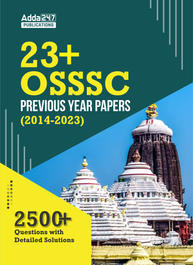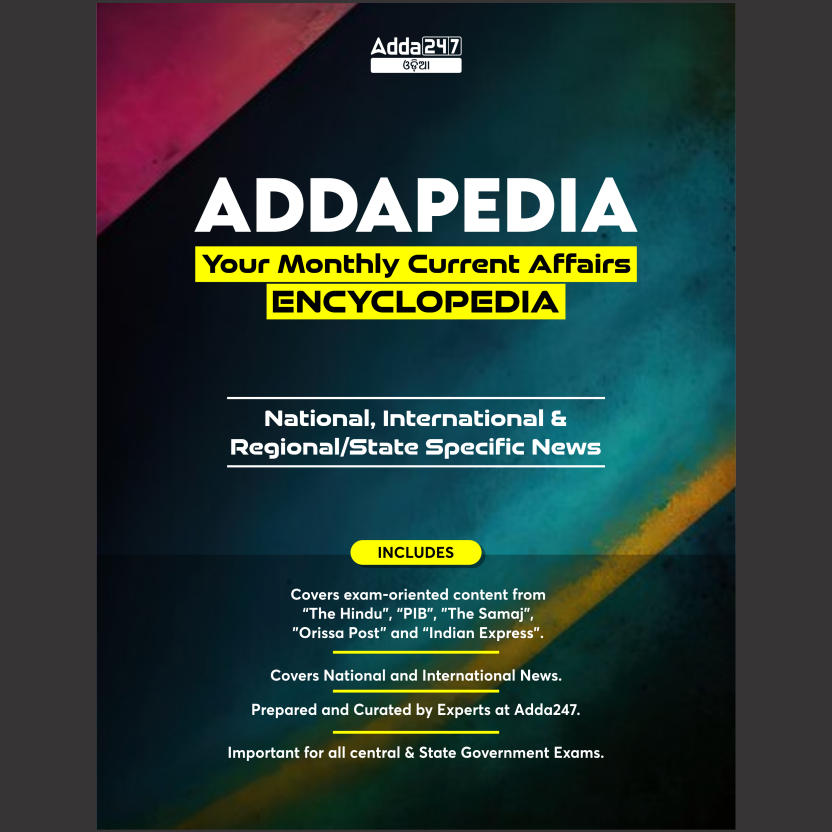The OSSSC RI, ARI, AMIN, SFS, ICDS Supervisor Exam 2024 are crucial examinations that require a comprehensive understanding of various cultural & economic topics. To help aspirants prepare effectively, we have compiled a set of 30 competitive-level Culture & Economy MCQs covering a wide range of subjects.
Top 30 MCQs on Culture & Economy for OSSSC RI, ARI, AMIN, SFS, ICDS Supervisor
These 30 Reasoning Multiple Choice Questions cover a diverse range of topics relevant to the OSSSC RI, ARI, AMIN, SFS, and ICDS Supervisor Exam 2024. Use these questions as a tool to assess your knowledge and enhance your preparation for the upcoming examination. Remember to review the explanations and expand your understanding of each topic to ensure a well-rounded preparation. Best of luck!
1. Where is the headquarters of SAARC?
(A) Kathmandu
(B) Manila
(C) Dhaka
(D) Jakarta
Answer: (A) Kathmandu
2. Which statement is not true about SAARC?
(A) Currently, there are 8 members of SAARC
(B) It was established in Bangladesh in 1964
(C) Its first meeting was held in Danka
(D) It aims to promote mutual cooperation among members in South Asia
Answer: (B) It was established in Bangladesh in 1964
3. If the Balance of Payment of a country is adverse, then which institution will help that country?
(A) World Bank
(B) World Trade Organization
(C) International Monetary Fund
(D) Asian Development Bank
Answer: (C) International Monetary Fund
4. Who issues the Special Drawing Rights (SDR) in the following?
(A) World Bank
(B) World Trade Organization
(C) Asian Development Bank
(D) International Monetary Fund
Answer: (D) International Monetary Fund
5. Which of the followings are called Brettonwoods Twins?
(A) IMF & International Bank for Reconstruction and Development (IBRD)
(B) IMF & World Trade Organisation
(C) IBRD & World Trade Organisation
(D) None of the above
Answer: (A) IMF & International Bank for Reconstruction and Development (IBRD)
6. Which of the following countries is the latest member of the International Monetary Fund?
(A) Tuvalu
(B) Iran
(C) Serbia
(D) Nauru
Answer: (D) Nauru
7. Which of the following statements is not correct?
(A) Both the IMF & IBRD have headquarters in Washington
(B) Both IMF & IBRD are the Constituent organizations of United Nations Organization
(C) IBRD is also called World Bank
(D) India’s vote share in the International Monetary Fund is 10%
Answer: (D) India’s vote share in the International Monetary Fund is 10%
8. Which of the following institutions is associated with Dunkel Proposals?
(A) World Bank
(B) International Monetary Fund
(C) World Trade Organization
(D) United Nations Organization
Answer: (C) World Trade Organization
9. Which of the following currency is not included in the calculation of the SDR of International Monetary Fund?
(A) Yen
(B) Yuan
(C) Rupee
(D) pound sterling
Answer: (C) Rupee
10. Which of the following institutions is not part of the World Bank community?
(A) IBRD
(B) WTO
(C) IDA
(D) IFC
Answer: (B) WTO
11. Who can declare a financial emergency in the country?
(a) Finance Minister of India
(b) President of India
(c) Lok Sabha Speaker
(d) Chief Justice of Supreme Court
Answer: (b) President of India
12. Which part of the Indian Constitution has emergency provisions?
(a) XVIII
(b) XVI
(c) XVII
(d) XV
Answer: (a) XVIII
13. Which article of the Indian Constitution has provisions for a financial emergency?
(a) Article 352
(b) Article 356
(c) Article 360
(d) None of the above
Answer: (c) Article 360
14. When was the National Emergency first declared in India?
(a) 1965
(b) 1991
(c) 1975
(d) Never.
Answer: (d) Never.
15. Which of the following statements is not correct in relation to the financial emergency?
(a) The declaration of financial emergency requires the approval of both houses of parliament.
(b) The resolution approving the declaration of financial emergency should be passed by a special majority by either House of Parliament.
(c) Once approved by both houses of parliament, the financial emergency continues indefinitely, until it is revoked by the President.
(d) The declaration of financial emergency can be canceled by the President at any time. Such a proclamation does not require parliamentary approval.
Answer: (b) The resolution approving the declaration of financial emergency should be passed by a special majority by either House of Parliament.
16. Under which circumstances can a financial emergency be declared?
i. At the time of financial stability in the country
ii. In case of threat to India’s financial stability or any part of its territory
(a) only i
(b) only ii
(c) In case of both i, ii
(d) i, ii not both
Answer: (c) In case of both i, ii
17. Which of the following is not correctly matched?
(a) Article 352: National Emergency
(b) Article 368: Constitutional amendment
(c) Article 356: Emergency in the state (President’s rule)
(d) Article 358: Financial emergency in the country
Answer: (d) Article 358: Financial emergency in the country
18. Which of the following constitutional amendments has empowered the President to declare a national emergency on a particular part of India?
(a) 38th
(b) 40th
(c) 42nd
(d) 62nd
Answer: (c) 42nd
19. Which of the following is not the effect of the financial emergency?
(a) During the financial emergency, the executive authority of the center gets expanded and it can give financial orders to any state according to its own.
(b) Salaries and allowances of all or any class of persons serving in the state cannot be reduced.
(c) All money bills or other financial bills that come up for the consideration of the President after the passage by the state legislature can be reserved.
(d) The President can reduce the salary of judges of the Supreme Court and High Court.
Answer: (b) Salaries and allowances of all or any class of persons serving in the state cannot be reduced.
20. A proclamation of financial emergency must be approved by both the Houses of Parliament within ……. from the date of its issue.
(a) 2 months
(b) 3 months
(c) 6 months
(d) 6 weeks
Answer: a) 2 months
21. Emergency Provisions in the Indian Constitution are derived from the Constitution of …….
(a) Germany
(b) America
(c) Canada
(d) Britain
Answer: (a) Germany
22. Union Budget of India is presented by whom and in which house/houses of the Parliament?
a) Finance Minister of India; Lok Sabha
b) Prime Minister of India; Rajya Sabha
c) Cabinet Secretary; Both Lok Sabha and Rajya Sabha
d) President of India; in the joint session of Parliament
Answer: a: Finance Minister of India
23. Who among the following presented Union Budget the maximum number of times?
a) P. Chidambaram
b) R K Shanmukham Chetty
c) Pranav Mukherjee
d) Morarji Desai
Answer: d: Morarji Desai; 10 times
24. Who among the following presented the first budget (interim) of Independent India?
a) Manmohan Singh
b) Jawaharlal Nehru
c) R K Shanmukham Chetty
d) N.D. Tiwari
Answer: c: R K Shanmukham Chetty
25. Which Bill was proposed to be passed to solve problems in infrastructure contracts, PPP, and Public Utilities?
a) Skill Development Programme
b) Companies Amendment Bill
c) Public Utility Resolution of Disputes Bill
d) Goods & Services Tax
Answer: c: Public Utility Resolution of Disputes Bill
26. Service Tax to be exempted on general insurance schemes under which scheme:
a) Companies Amendment Bill
b) Shyama Prasad Mukherji Rurban Mission
c) Customer Act
d) NIRMAYA Scheme
Answer: d: NIRMAYA Scheme
27. According to the 2018-19 budget speech of Arun Jaitley, India is at the third rank on the basis of what?
a) Purchasing Power Parity (PPP)
b) Gross domestic product (GDP)
c) Agricultural Production
d) Foreign Direct Investment (FDI)
Answer: a: Purchasing Power Parity (PPP)
28. Which of the following Yojna gave nominal premium and the highest-ever compensation in case of crop loss?
a) PM Fasal Bima Yojna
b) PM Krishi Sinchai Yojna
c) Shyama Prasad Mukherji Rurban Mission
d) Pramaparagat Krishi Vikas Yojna
Answer: a: PM Fasal Bima Yojna
29. Which of the following schemes is related to the management and conversion of cattle dung and solid in farms to compost, fertilizer, bio-gas, and bio-CNG?
a) Galvanizing Organic Bio-Agro Resources Dhan
b) Swachchh Bharat Abhiyan
c) Pradhan Mantri Jeevan Jyoti Beema Yojna
d) Prime Minister Krishi Sinchai Yojna
Answer: a: Galvanizing Organic Bio-Agro Resources Dhan
30. To enhance the governance capabilities of Panchayati Raj Institutions (PRIs), which of the following newly restructured schemes was introduced?
a) National Skill Development Mission
b) PM Kaushal Vikas Yojana
c) Swachh Bharat Abhiyan
d) Rashtriya Gram Swaraj Abhiyan
Answer: d: Rashtriya Gram Swaraj Abhiyan











